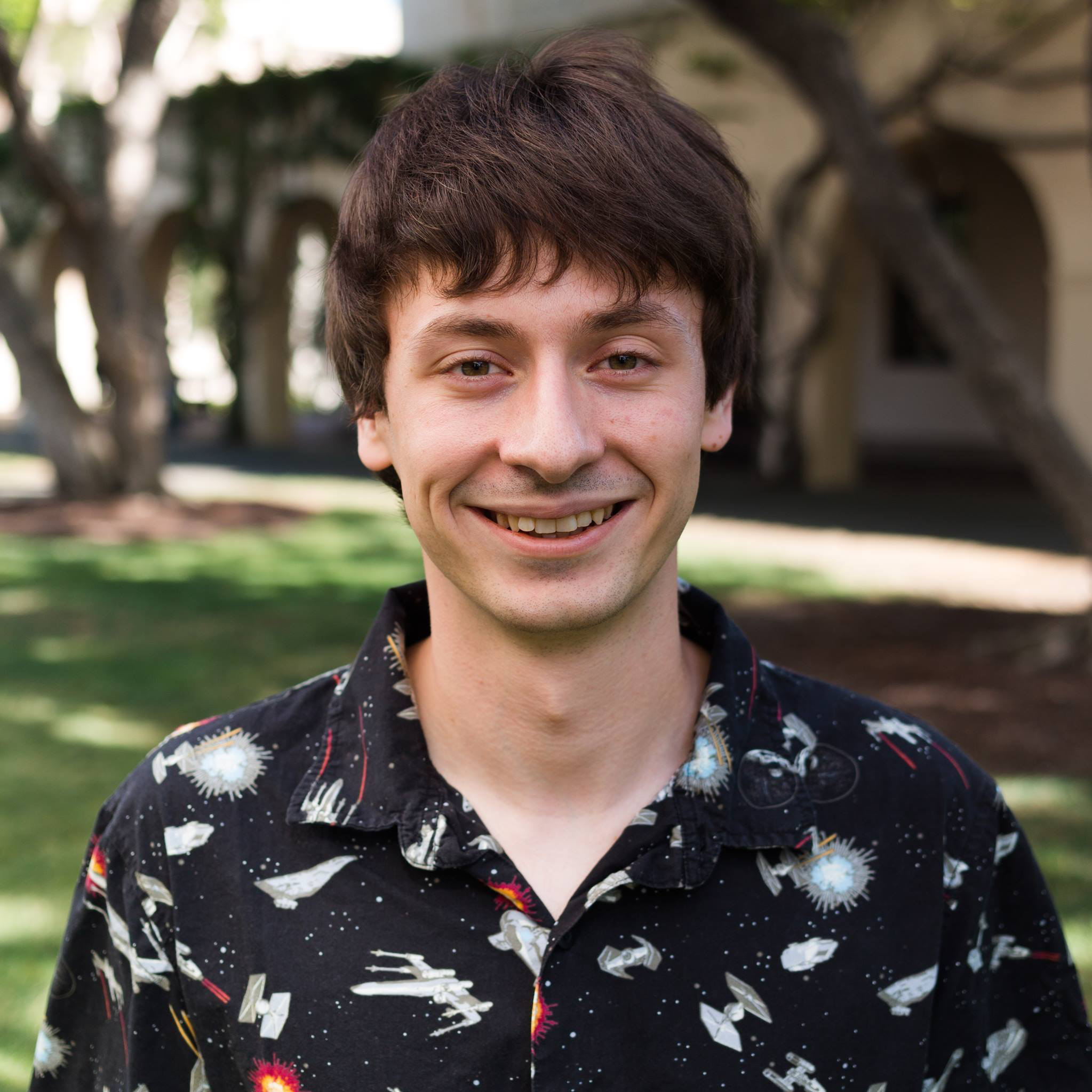Kevin B. Burdge, Pappalardo Fellow

Name: Kevin B. Burdge
Title: Pappalardo Fellow in Physics, 2021-2024
Email: kburdge@mit.edu
Phone: (617) 233-9957
Office: MIT Department of Physics
77 Massachusetts Avenue,
Ronald McNair Building, 37-675
Cambridge, MA 02139
Related Links:
Pappalardo Fellowships in Physics
Area of Physics
Research Interests
Kevin Burdge’s interests lie in discovering and characterizing astrophysical sources of both gravitational and electromagnetic radiation, especially those detectable by the upcoming space-based gravitational wave detector, the Laser Interferometer Space Antenna (LISA).
These sources are Galactic binary systems with orbital periods of less than an hour, and consist of two compact objects–generally a white dwarf with either a white dwarf, neutron star, or black hole companion.
LISA is expected to detect tens of thousands of such binaries within the Milky Way, and Burdge’s work focuses on leveraging data from current and upcoming wide-field optical surveys such as the Zwicky Transient Facility, the Transiting Exoplanet Survey Satellite (TESS), and the Vera Rubin Observatory to discover and precisely constrain the physical parameters of these objects using the photons they emit.
So far, Burdge has doubled the number of known examples of LISA-detectable binaries in the span of two years using the Zwicky Transient Facility, including the two shortest orbital period eclipsing binary systems known, and he has measured general relativistic orbital decay in several of these systems.
Short period binaries hosting two compact objects can be used to perform novel tests of General Relativity, precisely constrain the equation of state of objects such as white dwarfs, and study the processes of binary evolution which produce these systems. Many of these binaries are double white dwarf pairs predicted to produce a Type Ia supernova upon merger, a type of explosion which allowed for the measurement of the accelerating expansion of the universe.
Biographical Sketch
Kevin grew up in Heidelberg, Germany, as part of the U.S. community based there.
After interning at the Max Planck Institute for Nuclear Physics in Heidelberg, he was inspired to apply for the Research Science Institute summer program at MIT, where he conducted research with MIT Professor of Physics Hong Liu.
As a result of this experience, Kevin successfully applied to MIT, where as an undergraduate he conducted a wide variety of research projects in many subfields of physics.
Originally hoping to be a theorist, Kevin had a wonderful experience in two semesters of Junior Lab with Professors David Pritchard and Christoph Paus, and he subsequently shifted his career to research which involved making precise measurements of physical observables.
Kevin went on to complete his senior thesis under the guidance of Professor Peter Fisher.
After this, he migrated to the west coast to attend the California Institute of Technology for his PhD work, where he originally worked in quantum optics but transitioned to astrophysics after thoroughly enjoying his experience in a class he took on stars. Kevin is completing his PhD working with Professor Tom Prince, as well as working closely with Professors Jim Fuller and Shri Kulkarni.
Selected Publications
- Burdge, K.B., El-Badry, K., Marsh, T.R. et al. 2022, Nature, 610, 467, “A dense 0.1-solar-mass star in a 51-minute-orbital-period eclipsing binary.”
- Burdge, K.B., Marsh, T.R., Fuller, J. et al. 2022, Nature, 605, 41, “A 62-minute orbital period black widow binary in a wide hierarchical triple.”
- Burdge, K. B., Coughlin, M. W., Fuller, J., et al. 2019, Nature, 571, 528, “General relativistic orbital decay in a seven-minute-orbital-period eclipsing binary system.”
- Burdge, K. B., Fuller, J., Phinney, E. S. et al. 2019, The Astrophysical Journal Letters., 886, L12, “Orbital Decay in a 20 Minute Orbital Period Detached Binary with a Hydrogen Poor Low Mass White Dwarf.”
- Burdge, K. B., Prince, T. A., Fuller, J. et al. 2020, The Astrophysical Journal., 905, 32, “A systematic search of Zwicky Transient Facility data for ultracompact binary LISA-detectable gravitational-wave sources.”
- Caiazzo, I., Burdge, K. B., Ferrario, L., et al. 2022, Accepted to Nature, TBD, TBD, “A rapidly spinning white dwarf exhibits extreme composition variations over its surface.”
- Caiazzo, I., Burdge, K. B., Fuller, J., et al. 2021, Nature, 595, 39, “A highly magnetized and rapidly rotating white dwarf as small as the Moon.”